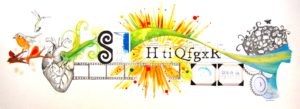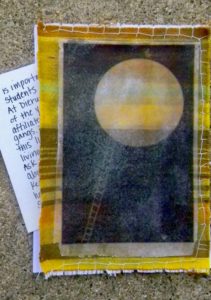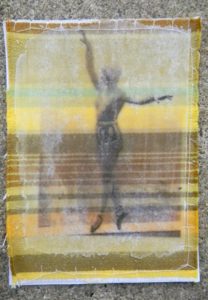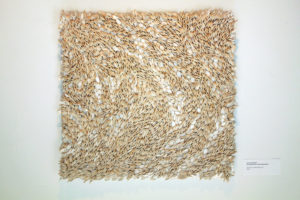carrie nordlund
now browsing by tag
Anew Coming into View
Blog Post by:
Carrie Nordlund, PhD
Kutztown University of Pennsylvania
Another year is coming into view and we too are ceaselessly in a state of becoming (Unrath & Nordlund, 2009). The term epiphany is a Greek derivative meaning to come into view (McDonald, 2008). Some new year’s resolutions come into view from epiphanies, profound illuminations of experiences with subsequent and emergent crystalizing moments of self-identity (Nordlund, 2019). As we usher in a new year, we can revisit the crystalizing moments we have cherished and open ourselves to what may come further into view. We may also recall challenges as we attribute meaning to the past year, those paralyzing moments of the past. Yet, these too offer us opportunities to recommit our efforts in becoming our best selves. The new year brings into view potentiality, to become anew.
The new year can pose uncertainty. One way to take in hand the feelings associated with uncertainty is to start to recognize epiphanies, with their consequential understandings of our deeply held certainties and feelings about self and the world, often ensue after periods of inner turmoil including states of anxiety and depression (Denzen, 1989, 1990; Jensen, 1999; McDonald, 2008; Miller, W.R. & C’de Baca, 2001; Pyne, 2014). Jarvis (1997) defined epiphany as “sudden discontinuous change, leading to profound, positive, and enduring transformation through reconfiguration of an individual’s most deeply held beliefs about self and the world” (p. v). When we are called to deeply feel and consider, we have reconfiguration available to us to see and be anew.
How might we arrive at reconfiguration in the new year? To follow, I offer some strategies affording reflection and reconfiguration. In the past, I have facilitated these three strategies for and with K-12 students, preservice art educators and myself via action research aimed at working on being the best self I can be.
My Personal Art History
The first strategy, “My Personal Art History”, offers a means to consider how might we better recognize our relationship with art and if necessary, reconfigure our aesthetic code during the new year.
Carrie Miller, Artist Educator, North Schuylkill Elementary School
Identities are constructed artifacts. We tend to teach from what we know. Our past experiences with art and art education partly construct our present and future beliefs about art and art pedagogy. What journey brought you to the creating artist and becoming teacher you are today? What is your personal art story?
Reflect on your child and adult art story, aesthetic experiences of the past and blossoming abilities in and with art. Visually describe any crystallizing and paralyzing moments during your explorations with art. Recreate in a timeline of visual expressions and metaphors of this art history starting from your earliest memories to now, 2020. The timeline leads to you to defining a future aesthetic code.
Postcard Moments
The second strategy, “Postcard Moments”, offers a means to consider sudden, turning point moments of epiphanies that provoke transformation of our conventions (Miller & C’de Baca, 2001; Nordlund 2019; Unrath & Nordlund, 2009).
Amanda Madea, Community School Coordinator, Bethlehem School District
Postcard Moments are small postcard-sized expressions created at self-determined key moments. The visual metaphors express a moment of sudden enlightenment—an epiphany—accompanied by written narrative about the personal “aha” and journey to it. The small postcard format serves as a compact, portable, and focused place where these such reflections are actualized, just as a traveler might choose which external event or experience from a trip is significant enough to write home.
Postcard Moments can become a larger culminating artifact by juxtaposing and synthesizing individual epiphanal works from the journey (e.g. journey book, travel game, visual mapping, digital film, photomontage,…). “Ahas” along the way or during the journey, lead to enduring understandings relevant to the traveler’s transformation or the potentiality of transformation and are characterized by traveler’s comprehension of the intimately interconnected parts of something complex. Postcard Moments often provide acute awareness of vistas previously unseen (Nordlund, 2019).
Personal Improvement Plan
The third strategy, “Personal Improvement Plan”*, offers a means to design an action plan in the new year targeting a specific goal to become one’s best self.
Carrie Nordlund, Associate Professor of Art Education, Kutztown University of Pennsylvania
Visual Artifact from Steiner’s Six Steps in Self-development Exercises
What threatens or impedes you from being your best self? To engage in a Personal Improvement Plan (PIP), take on a self-designed project that helps you become your best self over the new year. Intentionally choose a condition or disposition that is lesser and needs to be made more significant, positive, and enduring by ascribing personal meaning to it through a plan of improvement. Allow yourself to be vulnerable to create a SMART (specific, measurable, achievable, relevant and time-based) goal as the core of your improvement plan.
My PIP goal typically starts as a wondering, such as “What might occur when I devotedly practice mindfulness exercises directed at educators?” To answer this question, my PIP plan entailed an autoethnography study over six months where I sequentially employed and maintained Rudolf Steiner’s (1910/2011) Six Steps in Self-development: The Supplementary Exercises for Teachers by implementing one exercise each month until all six were engaged in the sixth month. I discovered and described in narratives the deep meaning or essence of experiencing the phenomena of Steiner’s six supplemental exercises entitled (1) control of thoughts; (2) initiative of will; (3) equanimity; (4) positivity; (5) open-mindedness; and (6) equilibrium. The outcome narratives explicated the phenomena under investigation and became a means for intervention, i.e., action research on my own practices and state of being.
When you employ a Personal Improvement Plan consider weekly documentation of your progress, including dates and times, pictures, successes, failures, outcomes, notes, wonderings, insights, and implications. Feelings of doubt, immobility, or disconfirmation can be or lead to breakthroughs. Personal improvement plans can either target our individual best selves, or on a macro level, us as change agents for a global best self.
*The “Personal Improvement Plan” was created and championed by Dr. Peg Speirs, Kutztown University of Pennsylvania.
References
Jensen, K. L. (1999). Lesbian epiphanies: Women coming out later in life. Harrington Park Press, New York.
McDonald, M. G. (2008). The nature of epiphanic experience. Journal of Humanistic Psychology, 48(1), 89–115.
Miller, W.R. & C’de Baca, J. (2001). Quantum change: When epiphanies and sudden insights transform ordinary lives. Guilford, New York.
Nordlund, C. (2019). Letters to colleagues: A community of practice for navigating and reshaping identity. In Daichendt (Ed.), Visual Inquiry: Learning and Teaching Art, 8(1), 49–62.
Pyne, S. (2014). The role of experience in the iterative development of the Lake Huron treaty atlas. In Fraser Taylor, D.R. (Ed.), Developments in the Theory and Practice of Cybercartography: Applications and Indigenous Mapping, 2nd Edition (pp. 245 -259). Oxford, UK: Elsevier Science.
Steiner, R. (2011). Six steps in self-development: The supplementary exercise. Rudolf Steiner Press.
Unrath, K. & Nordlund, C. (2009). Postcard moments: Significant moments in teaching art”. In Dhillon, P. (Ed.), Visual Arts Research, 35(1), 91–105.





 D5 Creation
D5 Creation